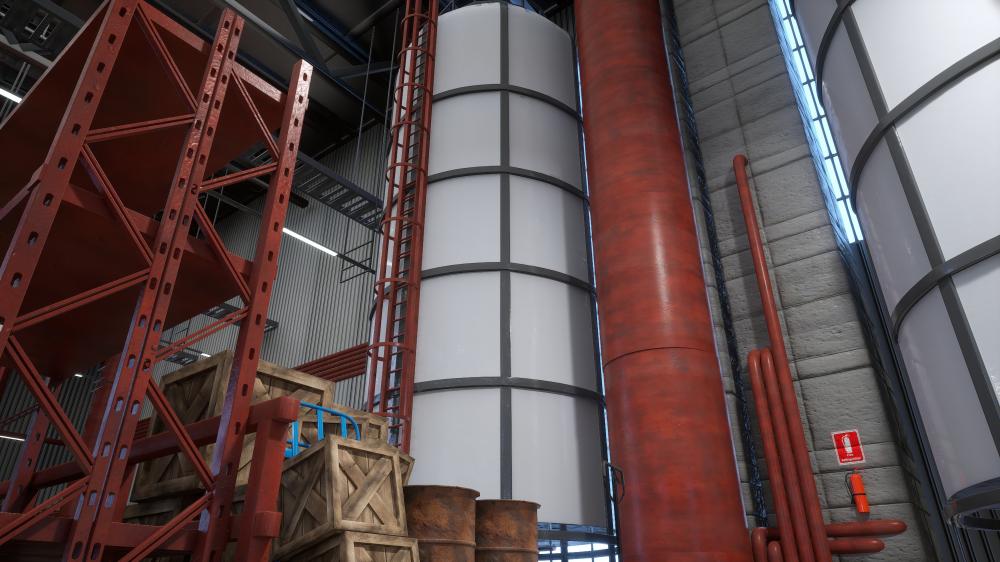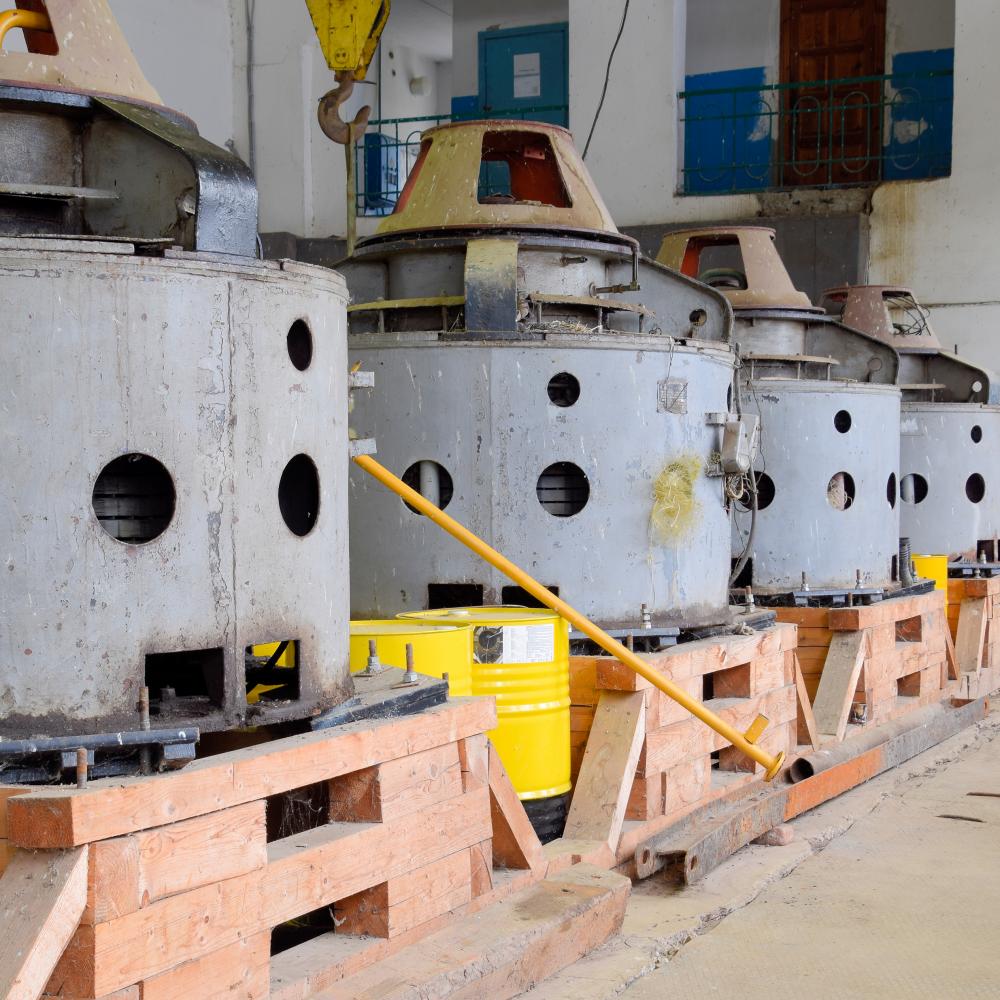
The Importance of Rotary Drum Dryers
At Player Design Inc., we recognize the pivotal role that rotary drum dryers play across diverse industries, especially in the biomass and renewable energy markets. These industrial dryers are not just about removing moisture; they’re about enhancing efficiency, promoting energy conservation, and supporting sustainable operation practices. Our commitment to engineering solutions that not only meet but exceed our client’s needs is at the forefront of our approach to designing and supplying rotary drum dryers. These systems are custom-tailored, ensuring optimal performance and environmental compliance.
How Rotary Drum Dryers Work
The functionality of rotary drum dryers revolves around the methodical tumbling of material in a rotating drum in the presence of a drying air. This process ensures uniform drying and can accommodate a varied spectrum of materials with diverse properties. The drum’s slight slope aids in moving the material through the system, utilizing gravity to enhance the efficiency of the drying process. Our design team integrates this fundamental principle with advanced engineering to create dryers that fulfill the specific drying requirements of our clients’ materials.
Key Features
Our rotary drum dryers are engineered with distinct features that set them apart in the biomass and renewable energy industries:
- Customizable Configurations: Whether it’s co-current or counter-current flow, our systems are designed to meet the unique requirements of each project.
- Energy Efficiency: Optimized for maximum heat transfer efficiency, ensuring low operational costs and reduced environmental impact.
- Durability: Constructed to withstand continuous, heavy-duty use, guaranteeing a long service life.
Advantages of Rotary Drum Dryers in Biomass Processing
Biomass processing demands a significant level of precision and efficiency, and our rotary drum dryers are at the heart of achieving these objectives. These dryers play a crucial role in preparing biomass for conversion and ensuring the end product meets quality standards. The consistent drying process reduces moisture content uniformly, making the biomass more efficient for combustion or further processing.
Maximizing Output
Our engineering expertise ensures the design of our rotary drum dryers maximizes output and performance. By facilitating a controlled and uniform drying process, the risk of material degradation is minimized, preserving the quality and integrity of the biomass.
Sustainability Focus
In alignment with our commitment to sustainability, our dryers are designed to use less energy and reduce emissions. We understand the importance of environmentally responsible manufacturing and strive to provide equipment that supports this ethos.
Custom Engineering Solutions
At Player Design Inc., we don’t believe in one-size-fits-all solutions. Our approach to designing rotary drum dryers involves a thorough understanding of our client’s requirements, the challenges they face, and the goals they aim to achieve. This client-centric focus ensures the delivery of solutions that are not only effective but also sustainable, echoing our mission to engineer a more sustainable world.
Innovative Technology Integration
Integrating innovative technology is at the core of what we do. Our rotary drum dryers incorporate advanced automation controls for enhanced process efficiency and reliability. This commitment to cutting-edge solutions reflects our dedication to providing our clients with the tools they need to succeed in a competitive marketplace.
Broad Range of Applications
Rotary drum dryers are versatile and can be used across various sectors to dry a wide array of materials. This versatility makes them indispensable in industries looking for efficient and reliable drying solutions. From agriculture to the chemical industry, our dryers are tailored to meet the specific needs of our clients, ensuring optimal drying performance across the board.
Our Track Record
Our expertise and innovative solutions have helped numerous clients achieve their operational and sustainability goals. The feedback and results speak volumes about the effectiveness of our rotary drum dryers in various settings. By pushing the boundaries of traditional drying technology, we continue to provide our clients with equipment that stands the test of time and operates at peak efficiency.
Player Design Inc. remains steadfast in our commitment to developing high-quality, sustainable, and cost-effective solutions for the biomass and renewable energy market. Our rotary drum dryers exemplify this commitment, providing a cornerstone upon which industries can build their drying processes. By partnering with our clients, we aim to engineer a more sustainable world, one solution at a time.

What are the disadvantages of a rotary dryer?
Rotary dryers are highly efficient, but they come with their set of challenges. One significant disadvantage is the initial cost of investment, which can be higher compared to other drying technologies. This isn’t just about the purchase price; it’s also about the installation and operational costs involved. Another downside is their size. Because of their bulk, they require a considerable amount of space, which might not be feasible for all facilities. Additionally, rotary dryers can be more energy-intensive, depending on the application and material being dried. This could lead to higher operational costs over time. It’s also worth mentioning that handling very fine materials can sometimes be a challenge due to particle entrainment with the exhaust gases. However, with the right engineering tweaks, many of these issues can be mitigated. Always remember, the key is to weigh these disadvantages against the efficiency and versatility benefits that rotary dryers bring, especially for large-scale operations.
What are the disadvantages of rotary drum?
Apart from the general disadvantages associated with rotary dryers, other specific challenges with rotary drums include the wear and tear on the drum itself and its components due to continuous use. This can necessitate more frequent maintenance and potential downtime, which could affect productivity. Moreover, the requirement for precise control of the drying air temperature and flow rate to prevent material damage or under-drying can make the operation of rotary drums somewhat complex. Ensuring uniform drying can also be a challenge, particularly with materials that have varying particle sizes and moisture contents. However, through our expertise at Player Design Inc., we’ve become adept at customizing rotary drum dryers to overcome these challenges, employing advanced automation and control technologies to enhance operational efficiency and reliability.
What is a rotary drum dryer used for?
Rotary drum dryers serve a pivotal role in numerous industries, providing a practical and efficient solution for drying large volumes of material. They are widely used in the biomass sector, for example, to dry wood chips, sawdust, and other biomass products, preparing them for use as fuels. In the agricultural field, they help in drying grains, seeds, and fodder. The mineral industry uses these dryers to prepare ores and other mined materials for processing. Additionally, they find applications in the chemical industry to dry various chemicals and powders. Essentially, any industry that requires the drying of bulk materials can benefit from the versatility and efficiency of rotary drum dryers. At Player Design Inc., we specialize in tailoring these dryers to meet the specific requirements of our clients, ensuring optimal performance for any given application.
What are the disadvantages of drum dryer?
While drum dryers, specifically rotary drum dryers, offer robust benefits in drying applications, they are not without their drawbacks. One notable disadvantage is their relative inefficiency in energy use for smaller operations. Due to their design and operational requirements, they often work best at larger scales, which might not be suitable for every business. Managing and disposing of the exhaust air, which may contain moisture and particulates, also pose environmental and regulatory challenges. Furthermore, the mechanical complexity of drum dryers means that skilled operators are necessary to manage the drying process effectively, potentially increasing labor costs. Nevertheless, for many of our clients at Player Design Inc., the advantages in terms of throughput and drying uniformity far outweigh these disadvantages, especially when combined with our custom-engineered solutions designed to maximize efficiency and minimize environmental impact.
How do custom engineering solutions benefit rotary drum dryer operations?
Custom engineering solutions tailor rotary drum dryers to the specific needs and challenges of each operation, greatly enhancing overall effectiveness and efficiency. By designing a system that carefully considers the unique properties of the material to be dried, such as moisture content, particle size, and heat sensitivity, we can optimize the drying process to be both energy-efficient and gentle on the product. Custom configurations, like adjusting the flight design within the drum or utilizing a specific airflow mechanism, can dramatically improve heat transfer rates and reduce drying times, saving energy and operational costs. Additionally, integrating advanced control systems allows for precise monitoring and adjustments during operations, further enhancing efficiency and product quality. At Player Design Inc., our focus on innovative and bespoke solutions ensures that we not only meet but exceed our clients’ expectations, driving forward their operational goals in a sustainable and cost-effective manner.
Resources
- Energy.gov – Learn about energy efficiency and sustainable practices in the energy sector.